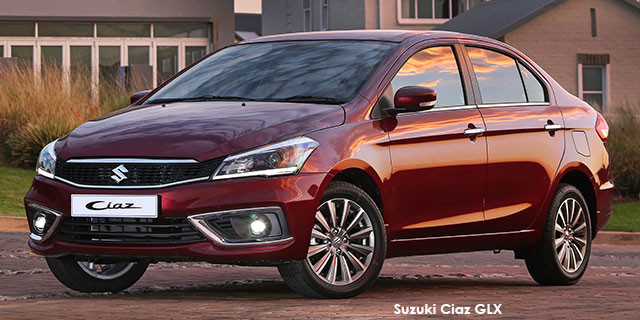Suzuki has given its value-oriented sedan a considerable update and the news is decidedly positive...
When we assess sedans around the R250 000 price point, often the first consideration is whether the vehicle in question will satisfy the needs and wants of ride-sharing fleets. Such is the difference between this segment now and when Suzuki first launched the Ciaz, which we tested in November 2015. We concluded that vehicle was an under-rated offering that met all the basic requirements of an affordable midsize sedan. Will taxi drivers turn to the new one?
Fast-forward nearly four years and, to meet those updated buyer requirements, Suzuki has unveiled a new Ciaz. At a scant R5 000 more than the outgoing variant, the latest model features a few appealing spec upgrades as well as a larger 1,5-litre naturally aspirated engine boasting an extra 7 kW and 8 N.m of torque.
Keeping with this GLX test unit’s standing at the top of the range (there’s an automatic alternative, too, plus cheaper GL options), Suzuki Auto South Africa has made some amendments to the outgoing model’s standard features’ tally. For starters, the Ciaz is now available with cruise control, a touchscreen infotainment system with Android Auto and Apple CarPlay, and a rear-facing camera (which is oddly offset and so displays guidelines that don’t line up to a parking bay). We noted with some surprise the continued omission of a rear-folding seat, reach adjustment on the steering wheel and traction control. That said, the additional technology has certainly lifted the ambience of the cabin, even if the plastics are still uniformly basic (although seemingly indestructable).
Coupled with the limited adjustment for the steering column is a driver’s seat set too high even when cranked all the way to the floor; the heads of taller CAR staffers brushed the rooflining. A peek under the seat revealed bulky mountings that could have been more slim-lined. Elsewhere, the news is very good: 806 mm of rear legroom rivals sedans from the luxury class and a boot space figures of 424 litres trounces that of all its competitors.
Alongside the cabin’s roominess, the engine is the star of the package. While it’s a claimed 0,1 L/100 km heavier on fuel than before (the vehicle is 11 kg weightier) – but, oddly, 0,4 L/100 km more frugal on our fuel route – the Ciaz is a whole 1,18 seconds quicker from 0-100 km/h (at 10,35 seconds) and improves 0,72 seconds from 100-120 km/h. That makes a definite difference when you’re carting three passengers and their luggage. With stickier-compound tyres, there’s no doubt the test vehicle would have gone even quicker. The brakes, likewise, showed a marked improvement, our 10-stop emergency tests from 100 km/h registering a reduction of 0,35 seconds on average.
Dynamically, little has changed, and that’s mostly a good thing. The absorbent ride is still there – arguably the most important dynamic characteristic for a car of this ilk – but so too is the vague steering and exaggerated body lean. The engine remains acceptably refined, however, and the manual transmission is typically Suzuki slick, although a sixth ratio at highway speeds wouldn’t go amiss.
TEST SUMMARY
Despite a not-insubstantial price increase since its initial launch, the Ciaz remains an honest offering with nicely upgraded features. The new engine is welcome, too, coming as it does with better performance and, if our fuel route is any indication, improved consumption. Furthermore, compared with the Toyota Corolla Quest and Volkswagen Polo Sedan, it boasts a longer service plan and more standard features.
That said, Suzuki’s dealer footprint isn’t nearly as comprehensive as Toyota and Volkswagen’s, which is something to keep in mind should you run the Ciaz as a fleet car. That mild concern aside, we can heartily recommend this new model from a brand that keeps pumping out exceedingly impressive offerings.
ROAD TEST SCORE

|
Original article from Car
See Full Suzuki Ciaz price and specs here









